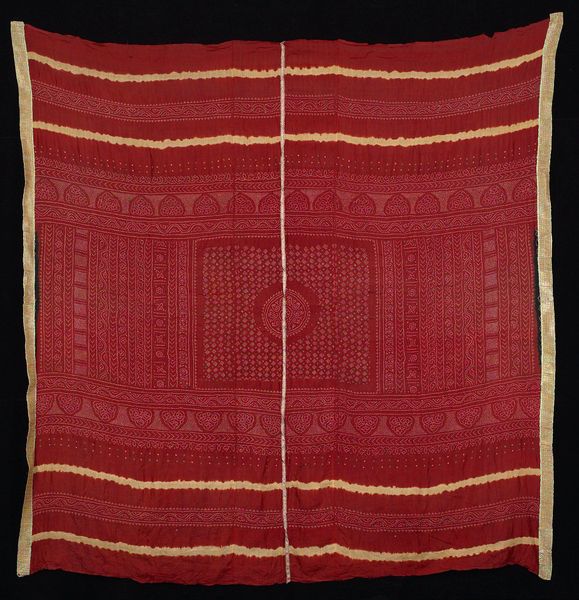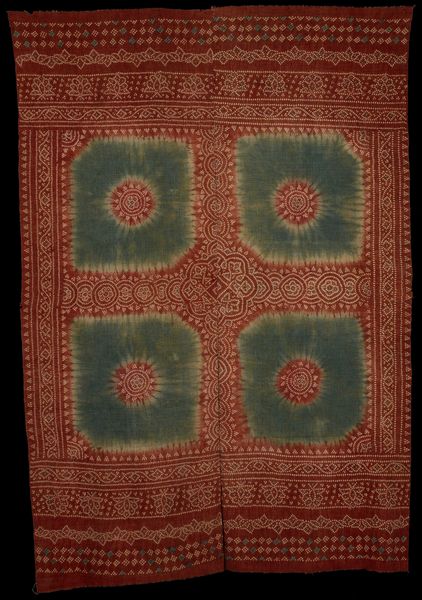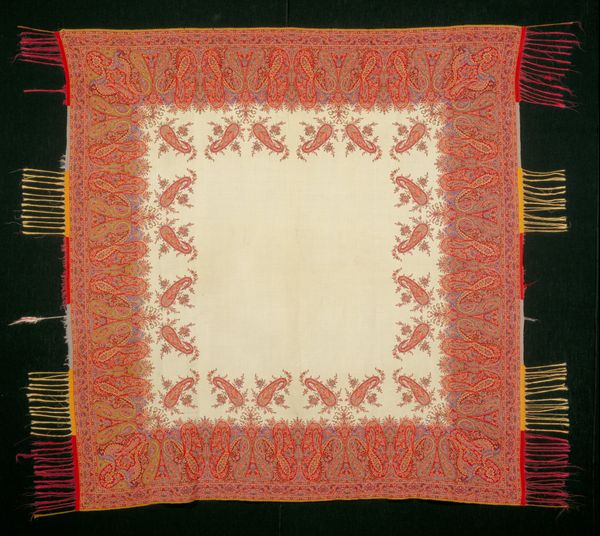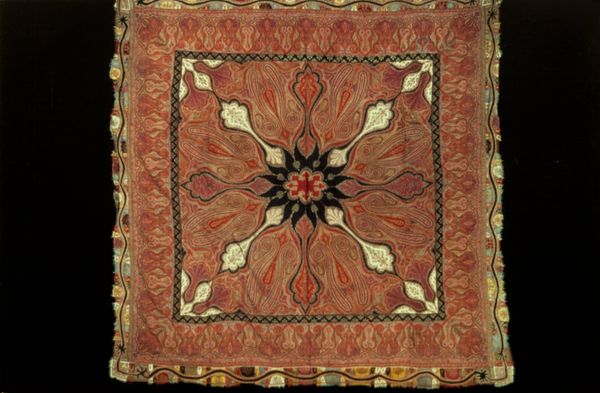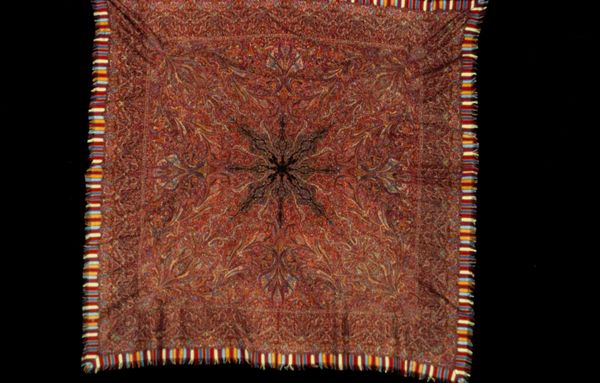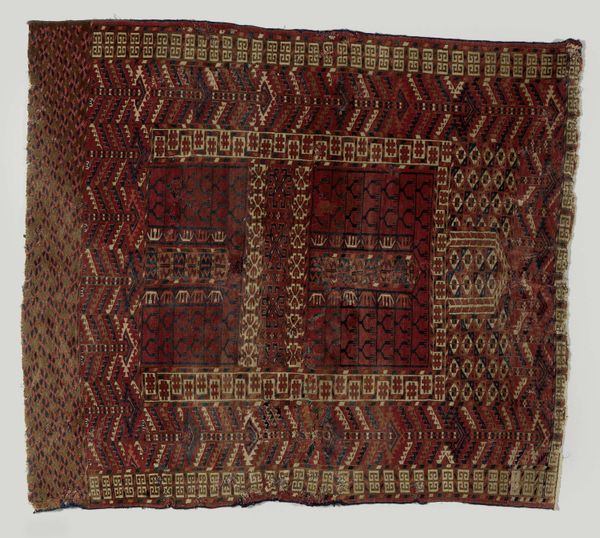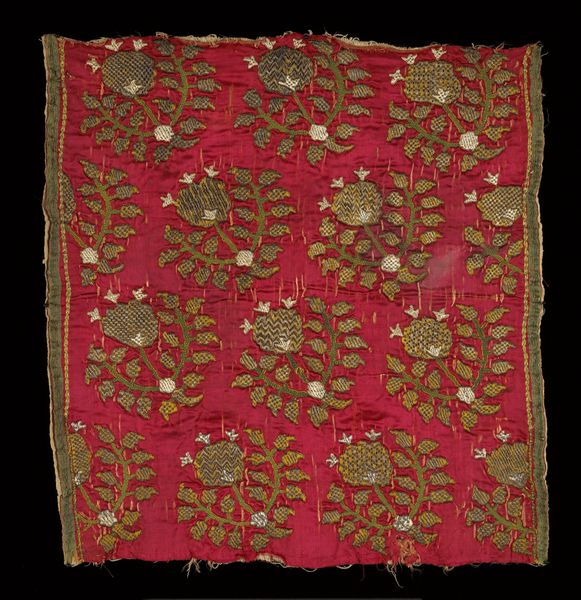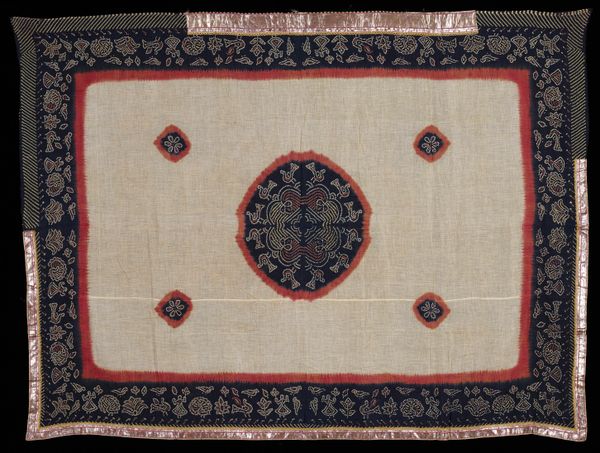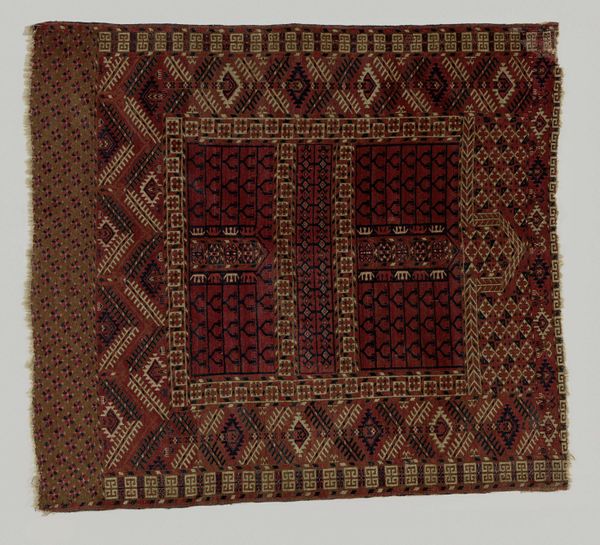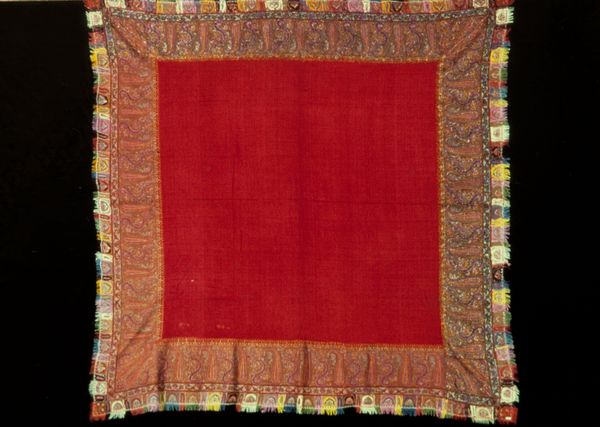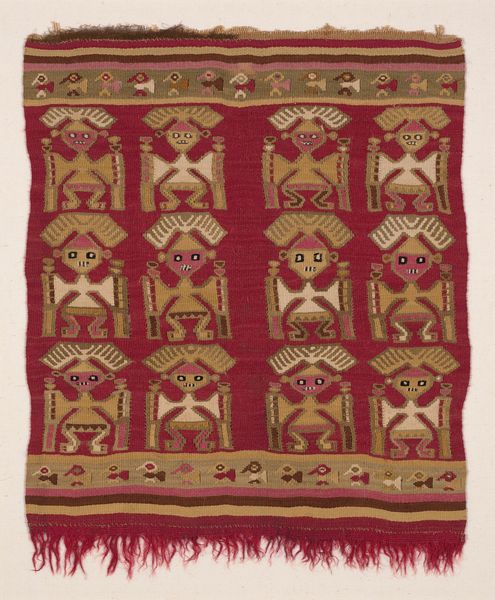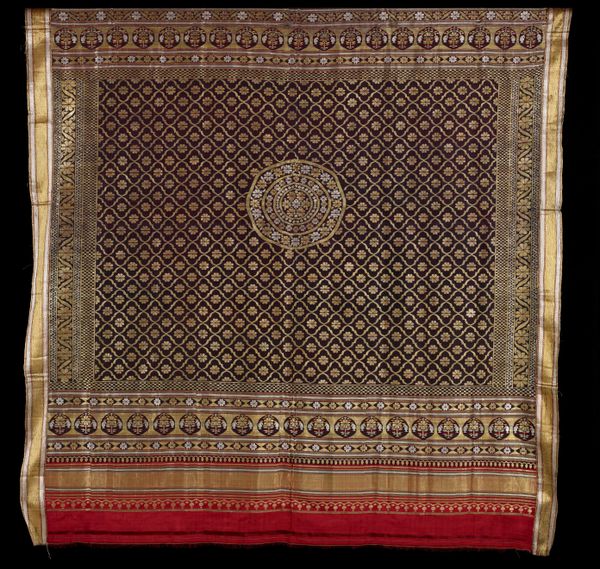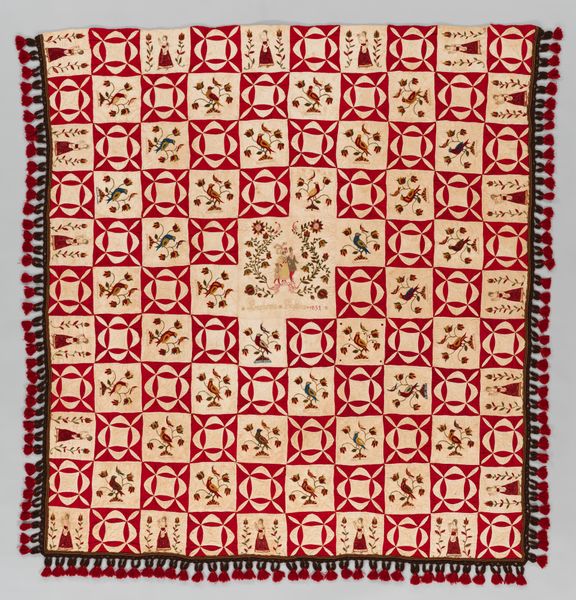
fibre-art, textile
#
natural stone pattern
#
fibre-art
#
textile
#
geometric pattern
#
abstract pattern
#
organic pattern
#
repetition of pattern
#
pattern repetition
#
textile design
#
decorative-art
#
imprinted textile
#
layered pattern
#
funky pattern
Dimensions: 78 1/2 x 80in. (199.4 x 203.2cm)
Copyright: Public Domain
Curator: This object is a shawl, dating back to the mid-19th century, currently residing here at the Minneapolis Institute of Art. Editor: Immediately I'm drawn into its dizzying pattern, like a fractal blooming outwards from its center. I wonder what it felt like to wear. Something about that star in the middle says "goddess." Curator: The patterns definitely pull you in. Shawls like these were incredibly popular during that period, often associated with Romanticism and a fascination with the exotic. These textiles became potent status symbols. Editor: Status symbol? Well, it certainly has a regal aura, all that detailed work and the implied cost... But for me, there’s an intimacy here. Imagine it draped over someone’s shoulders, the feel of it. I can imagine secrets whispered under its cover. Curator: Absolutely, and that’s where the politics come in. The shawl's imagery isn’t just decorative; it reflects colonial desires and trade routes of the time, which often romanticized and appropriated foreign cultures and aesthetics. The creation of this shawl may have displaced textile industries local to the design’s place of origin. Editor: Hmm, a shadow behind the shimmer, perhaps. So, while it might seem all cozy and goddess-like, there’s a larger narrative about cultural exchange and its consequences woven in there too, isn’t it? It gives you pause...makes you consider who made it and where, as well as who wore it and why. Curator: Precisely. An object of beauty and utility, and an historical record as well. I always appreciate how textiles tell such complex stories. Editor: Indeed! There's beauty on the surface and history deep within its woven threads. Thank you for guiding us on this journey of pattern and political whispers!
Comments
minneapolisinstituteofart almost 2 years ago
⋮
Worn by elites for centuries, Kashmiri shawls are fascinating documents of style, craft, and meticulous labor. This shawl was made for the European export market in the mid-19th century when they were at the height of style among fashionable ladies of Europe. Numerous paintings, such as the MIA's "Portrait of the Gaspard Moeremans Family" (see photo below 91.35 detail), portray women draped in Kashmiri shawls, displaying their status and wealth. Shawl production was a labor intensive process from start to finish. The finest shawls used soft fleece (termed pashmina or cashmere) collected from the underbelly of a wild Himalayan mountain goat. Their construction involved a complicated chain of command, including government inspectors, merchants, workshop owners, pattern makers, and finally, weavers. Weavers sat on the ground at their looms and followed the instruction of an individual who read aloud from a written pattern code that described each line of weaving, which in this case produced a design dominated by paisley, palmette, and blossoming tree motifs. Like many other shawls from this period, multiple pieces of cloth have been woven separately and stitched together to create the overall design.This shawl was additionally worked with fine embroidery, highlighting the edges and surfaces of woven patterns with brightly colored silk thread. The predominant color of the embroidery is a bright sky blue, which is supplemented by a dazzling array of other colors stitched in mind-boggling detail. The ripples in the fabric are a result of its warping over time, but suggest how the pattern was meant to be seen, resting in curves around its owner's shoulders
Join the conversation
Join millions of artists and users on Artera today and experience the ultimate creative platform.
